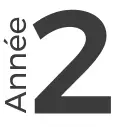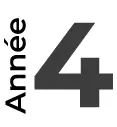The 2020 health crisis marked a new era for distance education. Historically relegated to making up for the shortcomings of continuing education, e-learning has since found its place at the heart of educational strategies, notably thanks to the initiatives of French universities and government programs aimed at increased integration of digital learning. The importance of interactivity, efficiency, and skills development constitute all the challenges of digitalized teaching .
ONLINE OPEN HOUSE
ONLINE OPEN HOUSE
August 28, 2024
from 6:30 p.m. to 8:30 p.m.
MEET US
Come and discover our training courses in strategic systemic approach, hypnosis and systemic coaching. You will meet the trainers and be able to talk with them!
" + details + "
" + ""; pc_confirmation.style.display = 'block'; var mp = document.querySelector('input[name="mp"]'); mp.value = '0'; } else { form.querySelector('._form- content').style.display = 'inline'; pc_confirmation.style.display = 'none'; } var hideButton = document.getElementById('hideButton'); , function() { var submitButton = document.querySelector('#_form_3_submit'); submitButton.disabled = false; submitButton.classList.remove('processing'); ]'); mp.value = '1'; window.location.href; }); const vgoAlias = typeof visitorGlobalObjectAlias === 'vgo': visitorGlobalObjectAlias; vgoAlias]; if (email && typeof visitorObject !== 'undefined') { visitorObject('setEmail', email); else if (typeof(trackcmp_url) != 'undefined' && trackcmp_url) { // Site tracking URL to use after inline form submission. _load_script(trackcmp_url); } if (typeof window._form_callback !== 'undefined') window._form_callback(id); }; window._load_script = function(url, callback, isSubmit) { var head = document.querySelector('head'), script = document.createElement('script'), r = false; var submitButton = document.querySelector('#_form_3_submit'); script.charset = 'utf-8'; script.src = url; if (callback) { script.onload = script.onreadystatechange = function() { if (!r && (!this.readyState || this.readyState == 'complete')) { r = true; callback(); } }; } script.onerror = function() { if (isSubmit) { if (script.src.length > 10000) { _show_error("3", "Sorry, your submission failed. Please shorten your responses and try again."); } else { _show_error("3", "Sorry, your submission failed. Please try again."); } submitButton.disabled = false; submitButton.classList.remove('processing'); } } head.appendChild(script); }; (function() { if (window.location.search.search("excludeform") !== -1) return false; var getCookie = function(name) { var match = document.cookie.match(new RegExp('( ^|; )' + name + '=([^;]+)')); return match ? match[2] } var setCookie = function(name, value) { var now = new Date(); var time = now.getTime(); var expireTime = time + 1000 * 60 * 60 * 24 * 365; now.setTime(expireTime); document.cookie = name + '=' + value + '; + ';path=/; Secure; SameSite=Lax;'; var addEvent = function(element, event, func) { if (element.addEventListener) { element.addEventListener(event, func); element['on' + event]; element['on' + event] = function() { oldFunc.apply(this, arguments); func.apply(this, arguments); form_to_submit = document.getElementById('_form_3_'); var allInputs = form_to_submit.querySelectorAll('input, select, textarea'), tooltips = [], submitted = false; var getUrlParam = function(name) { if (name.toLowerCase( ) !== 'email') { var params = new URLSearchParams(window.location.search); return params.get(name) || false; } // email is a special case because a plus is valid in the email address var qString = window.location.search; if (!qString) { return false; } var parameters = qString.substr(1).split('&'); for (var i = 0; i')); } } else if (elem.tagName == 'SELECT') { var selected = true; if (elem.multiple) { selected = false; for (var i = 0; i 31 && (charCode 57) && charCode !== 8) { e.preventDefault(); } }); }; var showPhoneInputError = function(inputId) { var errorMessage = document.getElementById("error-msg-" + inputId); var input = document.getElementById(inputId); errorMessage.classList.add("phone-error"); errorMessage.classList.remove("phone-error-hidden"); input.classList.add("phone-input-error"); }; var _form_serialize = function(form){if(!form||form.nodeName!=="FORM"){return }var i,j,q=[];for(i=0;iA little history
From the 19th century, distance education began to develop with institutions such as the University of London and the initiatives of Louis Eyrolles, offering correspondence courses to students and workers. This form of education gained popularity, particularly in developing countries since the 1960s, in response to budgetary constraints and insufficient teacher qualifications. The Open University, established in 1969, and other institutions such as the University of Phoenix, have moved towards distance education, taking advantage of the advent of information and communication technologies (ICT) in the 1990s to serve a wider audience at lower cost.
Distance education, or open and distance learning (FOAD), today includes correspondence courses, online courses, and MOOCs, aimed at both the initial training of traditional students and the continuing training of professionals. Thanks to ICT, this form of education has become more accessible and user-friendly, allowing a wide audience, including those with geographical or social constraints, to access learning.
E-learning, or online training, has transformed distance education by allowing more dynamic interaction between teacher and learner. Course materials and assignments are now accessible and submitted via online platforms, facilitating learner autonomy. The success of e-learning, particularly notable in the United States since 2003, has been more gradual in France, where it was initially adopted by large companies and a few pioneering universities. The European Union defines e-learning as the use of new technologies to improve learning, by facilitating access to resources and encouraging remote collaboration, reflecting the diversity of tools and practices in this area.
Contributions and limits of distance learning
The development of e-learning has integrated synchronous (real-time) learning with asynchronous (delayed) learning, improving the interactivity and effectiveness of online learning. Synchronous learning promotes live exchanges, strengthening cohesion and collaboration between students. Information and communication technologies for education (ICT) enable various forms of e-learning, combining synchronous, asynchronous, and multimedia elements, but cannot alone guarantee educational effectiveness.
The effectiveness of e-learning is based on a social constructivist approach, promoting learner autonomy. The implementation of a digital system aims to reduce costs, increase success and ensure fairness and user satisfaction. Although e-learning offers many advantages in terms of an innovative approach and cost reduction, it also presents specific challenges linked to the choice of learning mode and its conditions of use.
The contributions of e-learning arise from digitalization, offering richness, autonomy, and attractiveness, while its limits are linked to the choice and application of the learning method. The quality and effectiveness of learning strongly depend on the role and involvement of the trainer. The current health crisis has accelerated the combination of face-to-face and distance learning, taking advantage of the flexibility and geographic and temporal accessibility offered by e-learning.
The digital platform, essential for e-learning, is part of the overall digitalization of society, accentuated by the needs for teleworking during the health crisis. This transition to e-learning is changing teaching and learning methods, as well as the supply and demand of training, highlighting the importance of the trainer-learner relationship. Inspired by educational constructivism, e-learning aims to encourage learners to construct their own knowledge, moving from a teacher-centered pedagogy to a learner-centered pedagogy, reflecting the diversity of educational tools and approaches. in the field.
The level of interactivity
Interactivity in online learning is influenced by the teaching methods used, increasing in particular in the context of social learning and flipped classrooms. These approaches promote interactions between peers and with trainers, going beyond simple knowledge transmission to include active participation and collaboration. MOOCs , although promising, have been criticized for their low rate of interaction and learner persistence, highlighting the limits of the massive online approach. On the other hand, pedagogies such as game-based learning and serious games encourage visible student activity in the manipulation of knowledge and collaboration.
Project-based learning, as experimented at the University of Lorraine , illustrates the effectiveness of a constructivist approach which promotes interaction in a reconstituted environment, particularly in hybrid mode which combines synchronous and asynchronous sessions. Blended learning, mixing face-to-face and distance learning, meets the need for flexible training while maintaining interaction and direct communication with trainers. The efficiency of online learning depends on the quality of trainers, transactional presence, and the adaptation of teaching methods to the needs of learners. The trainer-learner relationship, essential in the ICT , requires active commitment from the tutor to support and mobilize the learners' skills. Critics of MOOCs highlight the need for a more personalized and supervised approach, despite the potential benefits for continuing education.
The scope of skills developed through e-learning must be diverse, ranging from conceptual understanding to practical application, including creativity and critical capacity. The chosen learning strategy must therefore be adapted to the target audience, favoring an approach that promotes both direct and collateral learning. The design of digital training requires from the trainer a range of skills ranging from conceptual to technical, including organizational and relational, to effectively respond to the diverse needs of learners.
Knowledge reuse
The use of knowledge in the context of e-learning refers to the ability of learners to apply the knowledge acquired through digital tools in practical situations, such as their professional environment. This notion underlines the importance of the relevance and transposability of learning tools according to the needs, expectations and skills of users. Despite the widespread assumption that digital natives are naturally comfortable with information and communication technologies (ICT) in an educational setting, studies show that it is rather individuals aged 35 to 45 who most use digital technologies in learning.
The effectiveness of the use of knowledge depends largely on the integration of collaborative work and role-playing, which enrich essential communication skills in the professional environment. The role-play promotes learners' autonomy, organization, experimentation and creativity, while developing spontaneous collaboration and increasing their motivation and satisfaction through reflective and feedback situations.
Game based learning , in particular, illustrates well how the fun aspect of digital simulations can encourage experimentation and the reproduction of skills in a real setting. Studies on this subject highlight the benefits of game-based learning on memorization and skill acquisition, emphasizing the importance of learning at one's own pace, of adapting the course to different levels. of users, empowerment and positive effects on motivation and self-esteem.
In conclusion, the use of knowledge in e-learning is essential to ensure that digital learning is not limited to the acquisition of theoretical knowledge, but extends to the practical application of skills in various professional contexts and personal, with particular emphasis on feedback and collaborative work.
Train at LACT
LACT offers several live certified web training courses with 50 international trainers.
- Generalist systemic training
- DU in Relationship Clinic with the University of Paris 8
- Clinical Masters with specialization in psychopathology with Pr Nardone's CTS
- Systemic Coach Training
- Systemic training in relationship management with the University of Grenoble
- Online Ericksonian Hypnosis Training
References
- Baldwin, SA, Wampold, BE and Imel, ZE (2007). Untangling the alliance-outcome correlation: Exploring the relative importance of therapist and patient variability in the alliance. Journal of Consulting and Clinical Psychology, 75(6), 842-852.
- Benish, S.G., Quintana, S. and Wampold, B.E. (2011). Culturally adapted psychotherapy and the legitimacy of myth: A direct-comparison meta-analysis. Journal of Counseling Psychology, 58(3), 279-289.
- Bordin, E.S. (1979). The generalizability of the psychoanalytic concept of the working alliance. Psychotherapy: Theory, Research & Practice, 16(3), 252-260.
- Elliott, R., Bohart, AC, Watson, JC, & Greenberg, LS (2011). Empathy. Psychotherapy, 48(1), 43-49.
- Frank, J.D. (1973). Persuasion and healing: A comparative study of psychotherapy (2nd ed.). Baltimore: Johns Hopkins University Press.
- Gibson, P. (2023). Persuasion Principle. Strategic persuasion. Strategic science
- Grégoire Vitry, Claude de Scorraille, Claudette Portelli, Michael F. Hoyt, Redundant Attempted Solutions: Operative Diagnoses and Strategic Interventions to Disrupt More of the Same, Journal of Systemic Therapies, 10.1521/jsyt.2021.40.4.12, 40, 4, (12 -29), (2021).
- Nardone, G. and Balbi, E. (2008). The logic of therapeutic change. Karnac Books.
- Nardone, G. and Portelli, C. (2005b). Knowing Through Changing. The evolution of brief strategic therapy. Crown House.
- Nardone, G., & Salvini, A. (2007). Strategic dialogue. KarnacPublishing.
- Robson, D. (2023). The Expectation Effect. Cannongate. UNITED KINGDOM.
- Wampold, B.E. (2001). The great psychotherapy debate: Models, methods, and findings. Mahwah, NJ: Lawrence Erlbaum Associates.
- Wampold, B.E. (2015). How important are common factors in psychotherapy? An update. World Psychiatry, 14(3), 270-277.
- Wampold, BE and Imel, ZE (2015). The great psychotherapy debate: The evidence for what makes psychotherapy work (2nd ed.). New York, NY: Routledge.
To find out the prices, select the training that interests you
MAPPING OF ALL LACT TRAINING COURSES
AND STRATEGIC APPROACH
Prerequisites
_
general
Bachelor's degree
with or without
clinical experience
clinical
Bac +3
with
clinical experience
Bac +5
with
clinical practice
education
Bachelor's degree
with or without
teaching experience
Bac +3
with
teaching experience
BUSINESS
Bachelor's degree
with or without
coaching experience

LACT
CERTIFICATE -
FOUNDATIONS LEVEL
UNIVERSITY
DIPLOMA -
RELATIONSHIP
CLINIC AND
STRATEGIC
INTERVENTION -
with
Paris 8 University
DIPLOMA
-
MASTER
®
IN
STRATEGIC SYSTEMIC
LACT
CERTIFICATE –
EDUCATION
FUNDAMENTALS LEVEL
UNIVERSITY
DIPLOMA -
STRATEGIC
SYSTEMS APPROACH TO
EDUCATION
-
with
Paris 8 University
LACT
CERTIFICATE -
SYTEMIC
COACHING
FUNDAMENTALS LEVEL

LACT CERTIFICATE - PRACTICAL LEVEL
COACH
DIPLOMA ®

SYSTEMICIAN ® - RELATIONSHIP CLINICIAN ® DIPLOMA - ADVANCED LEVEL
CLINICAL MASTER®![]()
DIPLOMA MASTER HYPNOSIS
AND STRATEGIC APPROACH

general
Bachelor's degree
with or without
clinical experience
clinical
Bac +3
with
clinical experience
Bac +5
with
clinical practice
LACT
CERTIFICATE -
FOUNDATIONS LEVEL
UNIVERSITY DIPLOMA
RELATIONSHIP
CLINIC AND
STRATEGIC INTERVENTION
with Paris 8 University

MASTERS
®
DIPLOMA IN
STRATEGIC SYSTEMIC
BUSINESS
Bachelor's degree
with or without
coaching experience
education
Bachelor's degree
with or without
teaching experience
Bac +3
with
teaching experience
LACT
CERTIFICATE -
SYTEMIC
COACHING
FUNDAMENTALS LEVEL
LACT
CERTIFICATE –
EDUCATION
FUNDAMENTALS LEVEL
UNIVERSITY
DIPLOMA –
STRATEGIC
SYSTEMS APPROACH TO
EDUCATION
with Paris 8 University

PRACTICAL LEVEL CERTIFICATE
DIPLOMA
®

SYSTEMICIAN ® - RELATIONSHIP CLINICIAN ® DIPLOMA - ADVANCED LEVEL

CLINICAL MASTER®![]()
DIPLOMA MASTER HYPNOSIS





